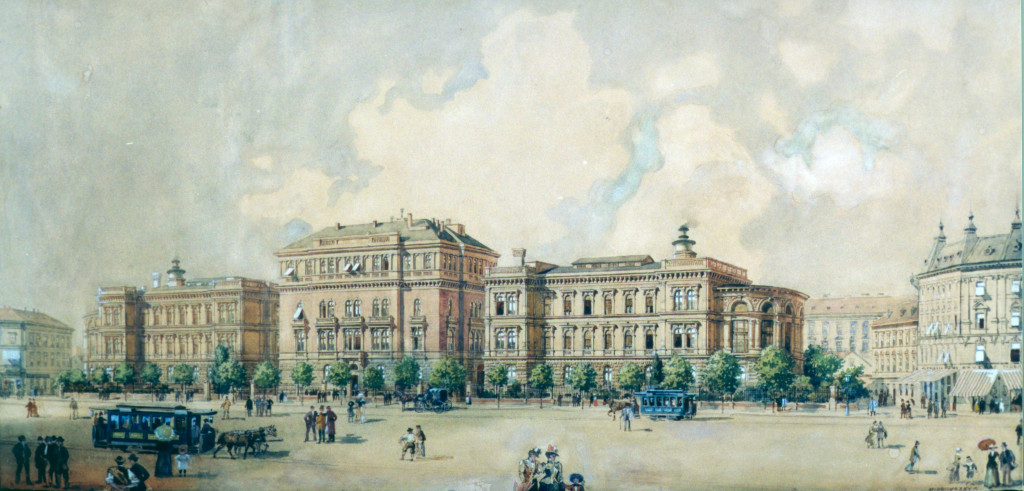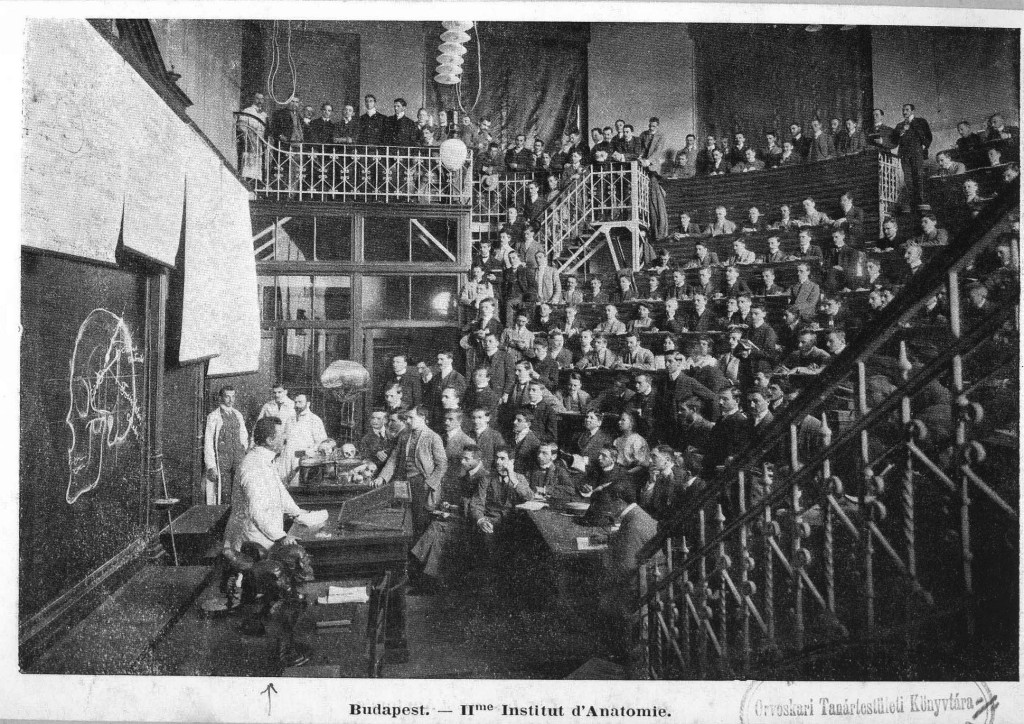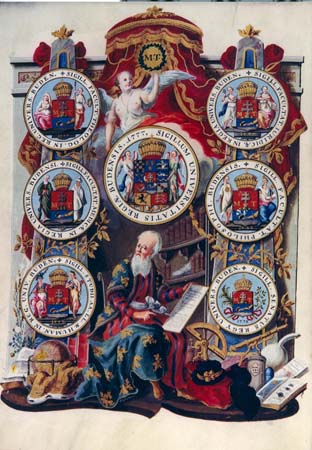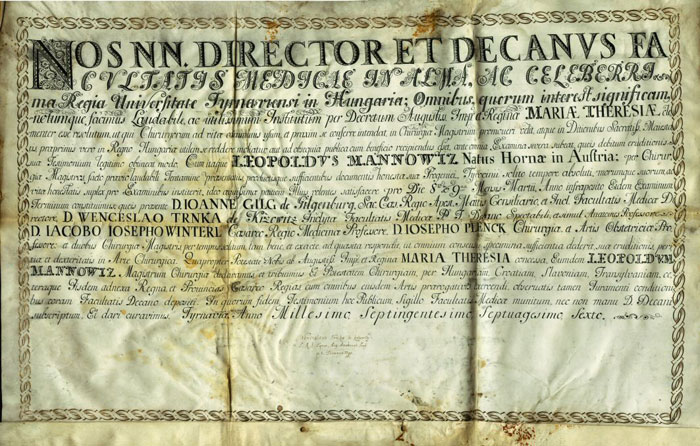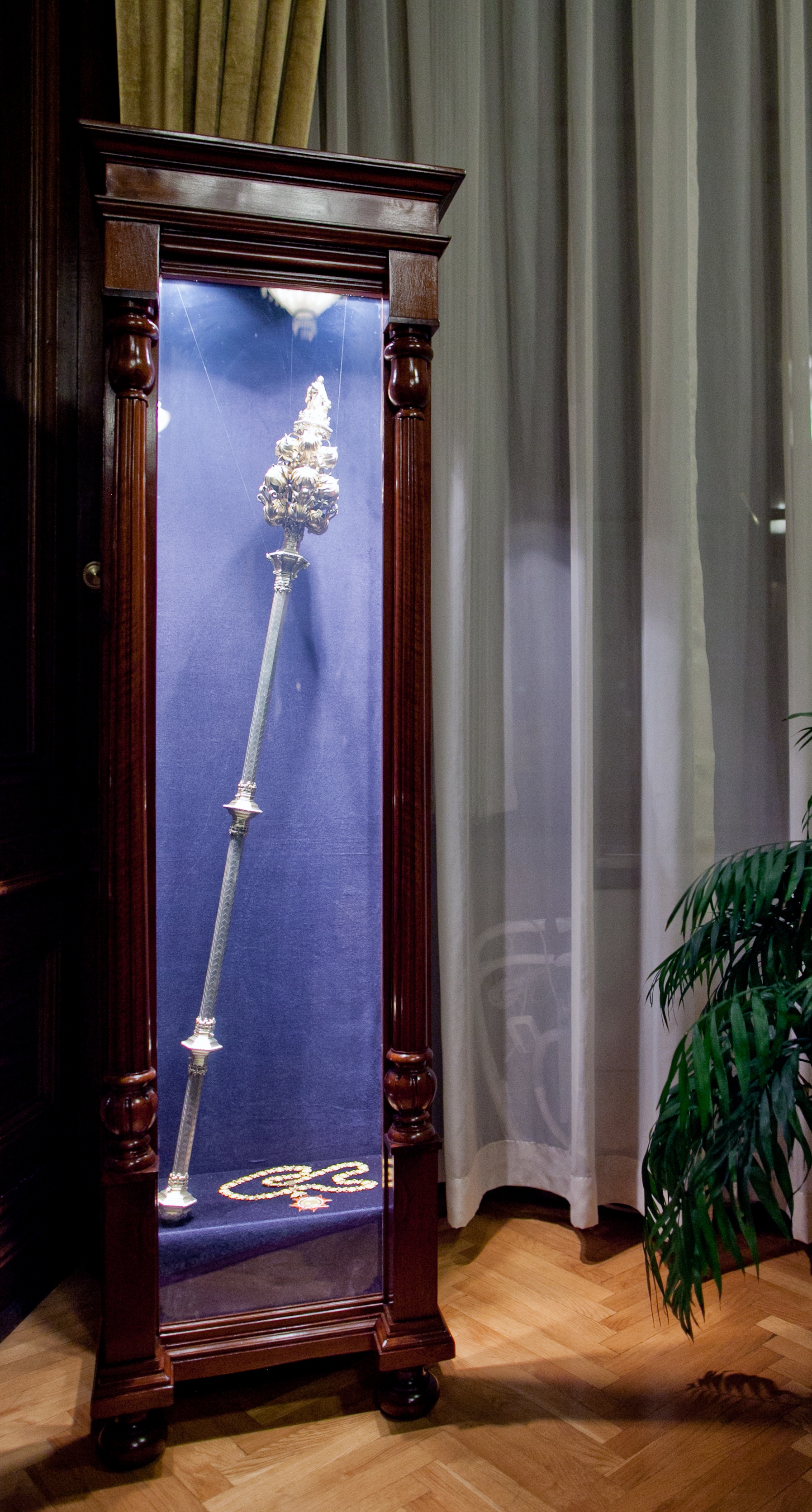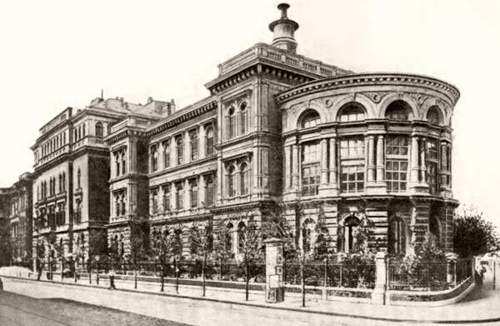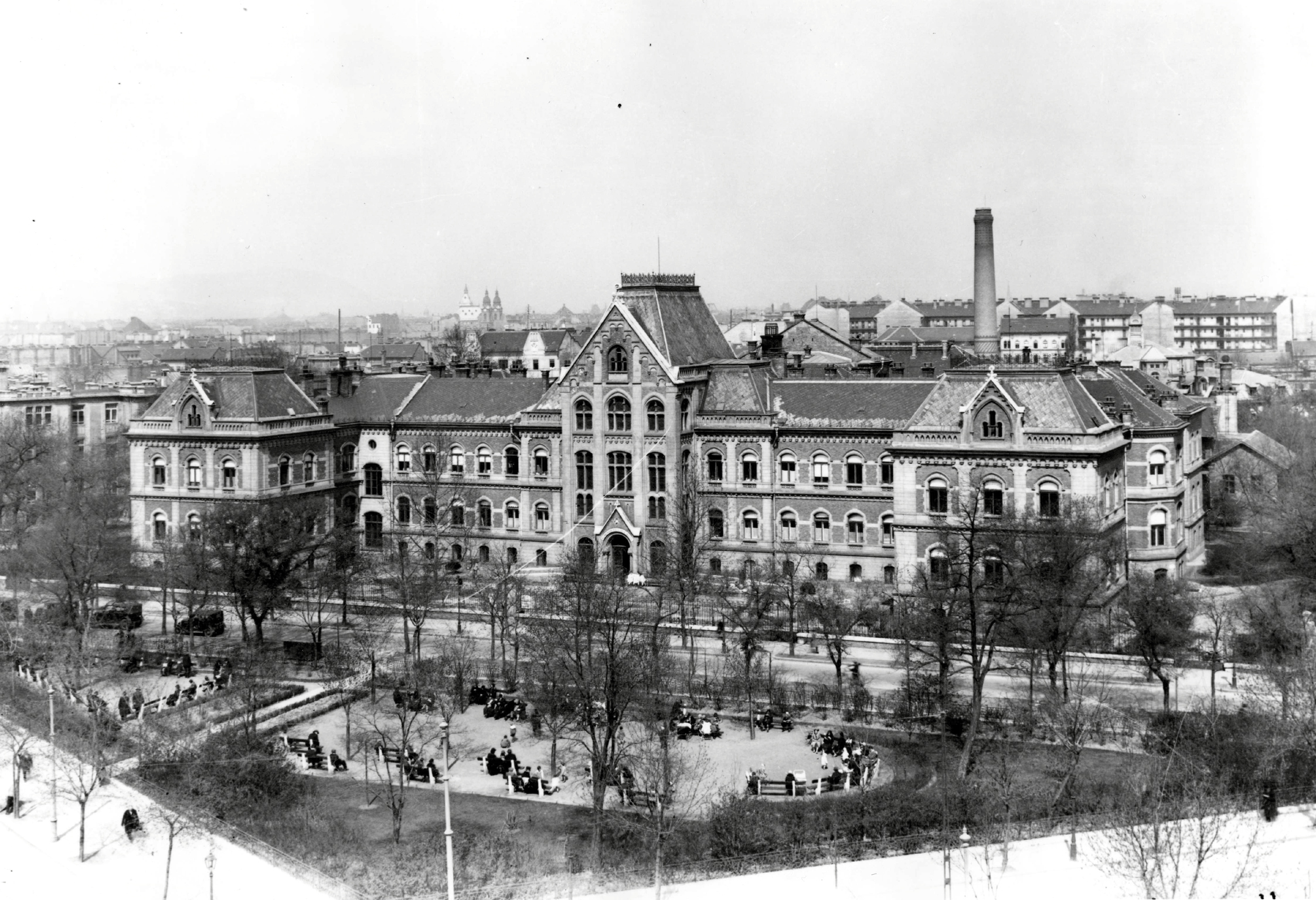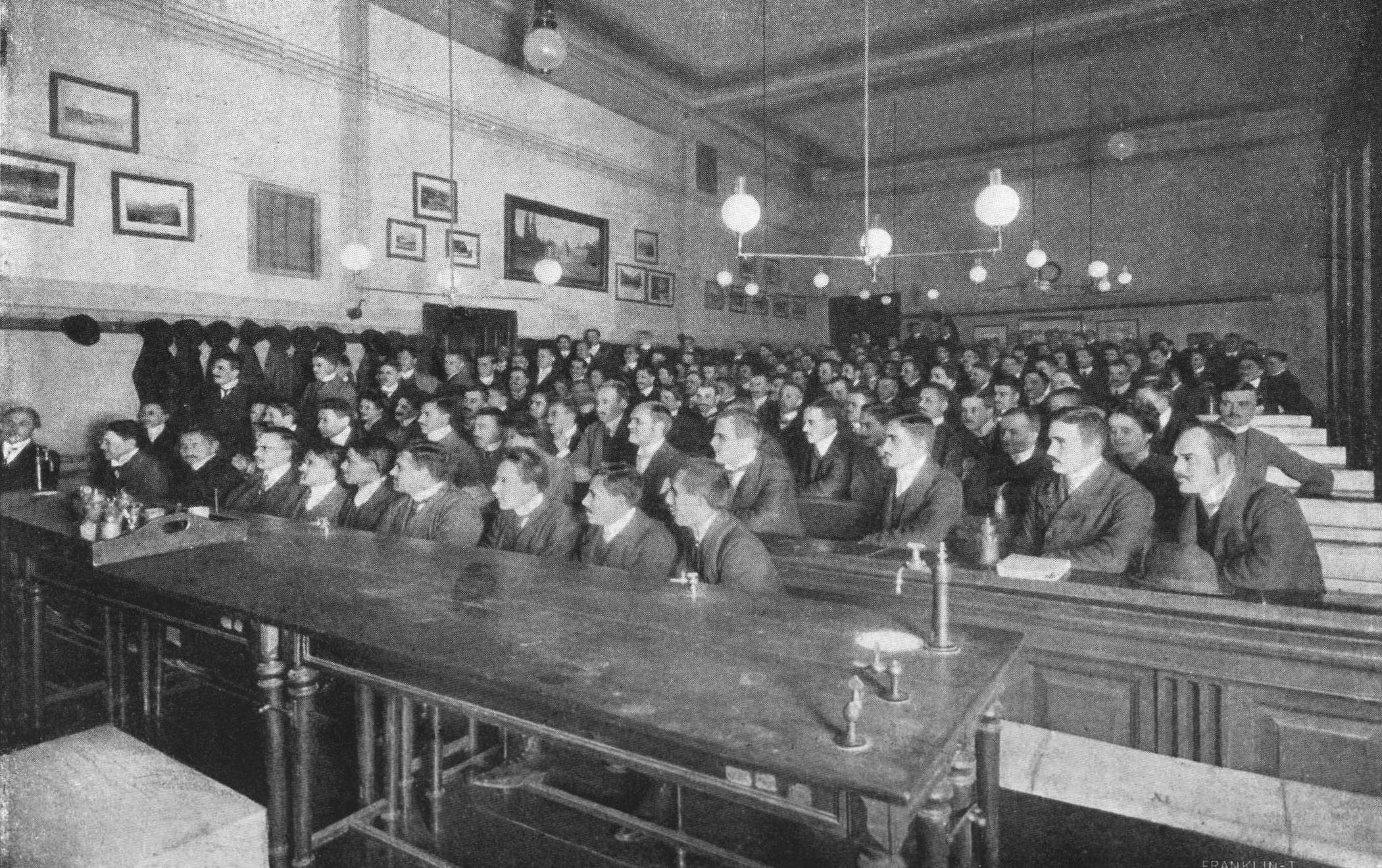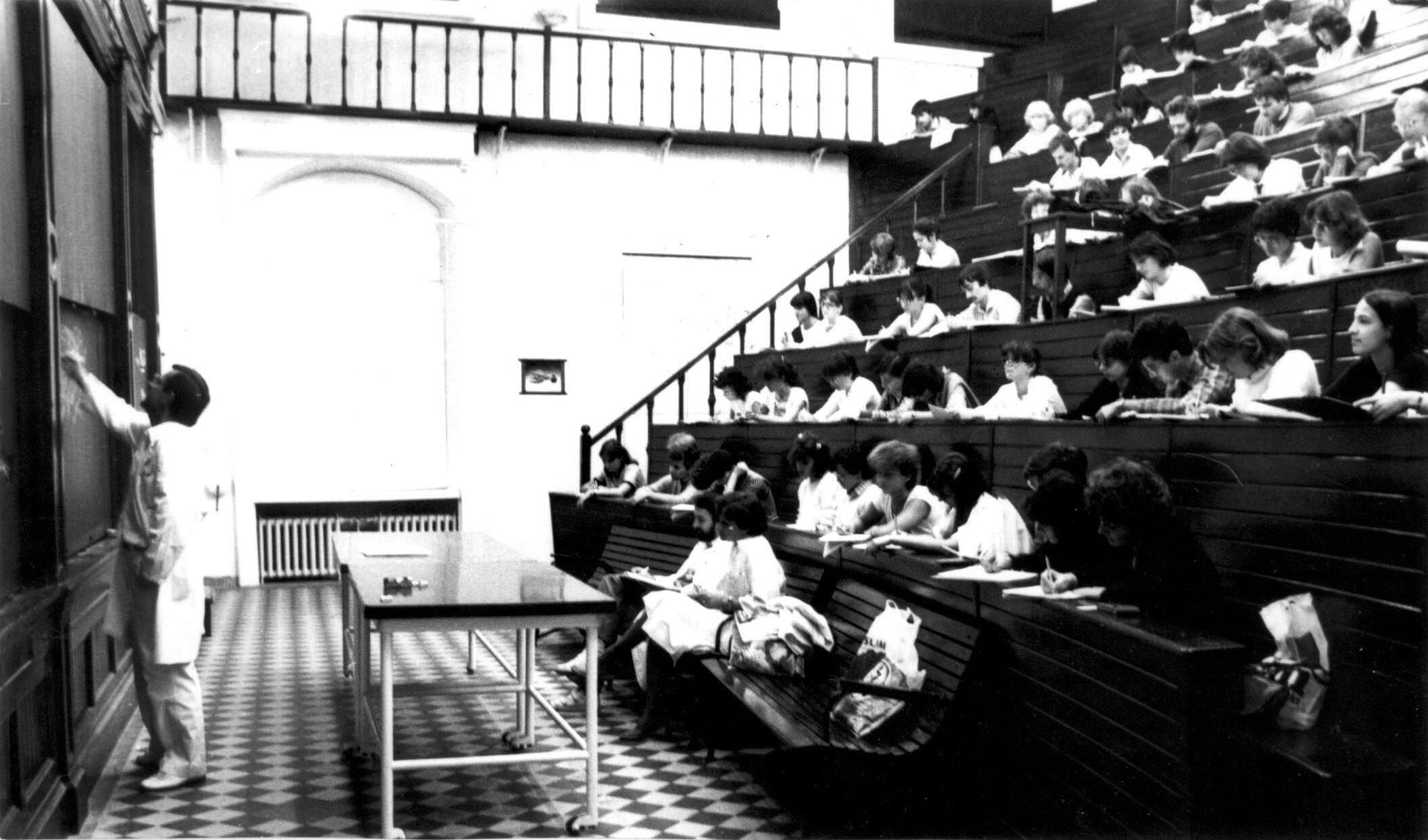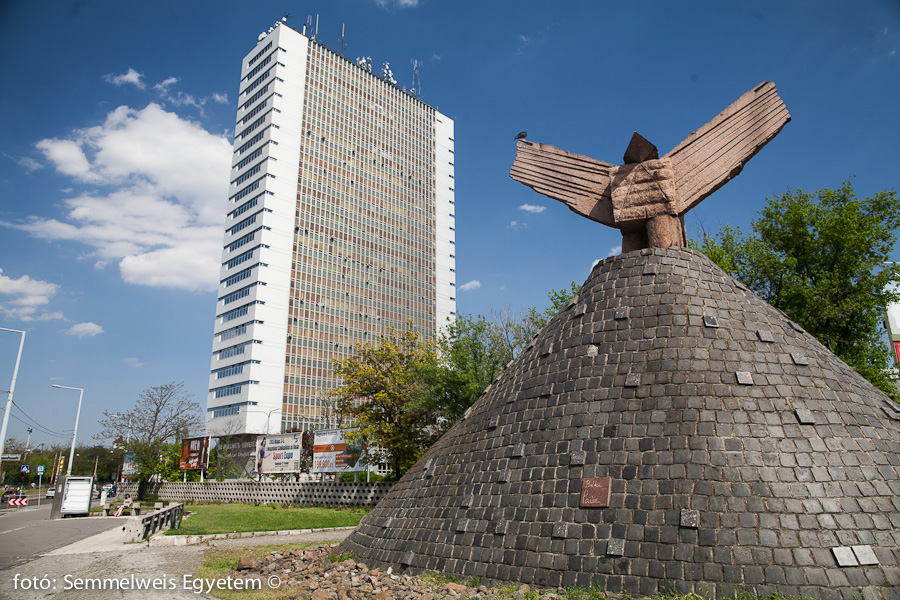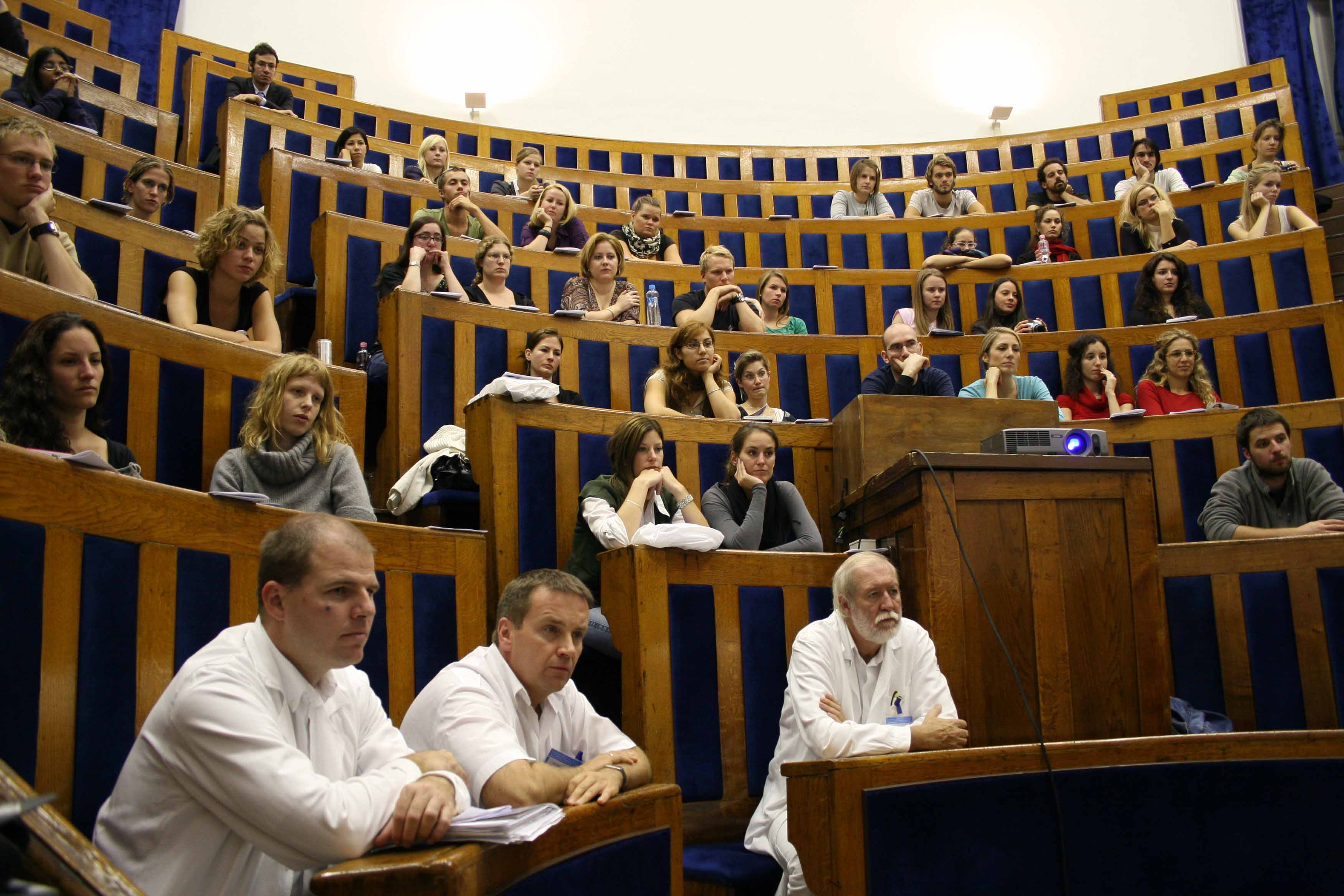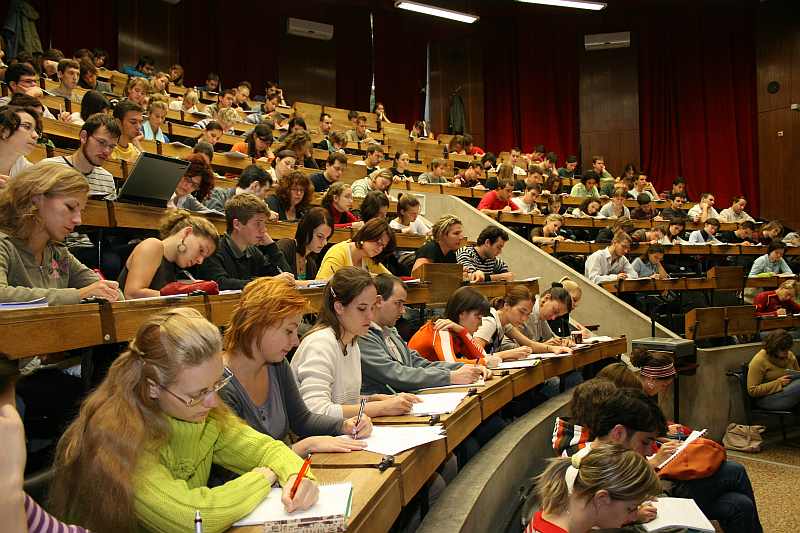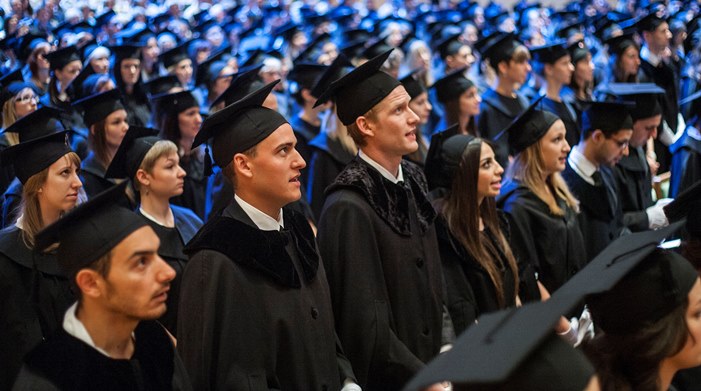Short History
Short History of the University
Semmelweis University’s history started 250 years ago in 1769, when Queen Maria Theresa added a medical faculty to the University of Nagyszombat (now Trnava, Slovakia). Not long after, the university moved first to Buda then to Pest (now Budapest) and, once the university settled in its permanent location, a period of great development commenced. The number of departments and clinical beds grew – so much so, in fact, that by 1838 congestion had become so great, that even the Hungarian National Assembly addressed the Medical Faculty’s situation.
Despite the tight circumstances, the Faculty’s professors strove to keep pace with international medicine, which was gaining momentum and becoming increasingly specialised during this time. Unfortunately, many were imprisoned or forced into emigration following the defeat of the Hungarian Revolution of 1848. As a result of the large-scale construction projects that commenced in the 1870s, Üllői út, then considered the outskirts of the city, became the central axis of the Medical Faculty, complete with clinical departments, a botanical garden, and the directorate.
Although women were allowed to be admitted to the Faculty starting in the 1800s, it was the First World War that brought real change in this area, when the majority of the professors and students enlisted in the army. The situation had barely begun to normalise following the end of the war when the economic crisis ensued, greatly reducing the amount of state money spent on health care. In spite of this, the Medical Faculty achieved international recognition by this time, and it was also during this period that the system of qualifications used today were developed, and the length of study increased to six years.
During the Second World War, as the front neared Budapest in 1944, the authorities tried to evacuate the Medical Faculty to Germany. However, due to the Faculty’s resistance, this attempt was only partially successful. The Faculty sustained considerable damage during the Siege of Budapest, as the majority of its equipment was destroyed, and its buildings suffered significant damage.
In the early 1950s, several hospitals were attached to the university and turned into clinics. At the same time, the Medical Faculty became an independent institution as the Budapest University of Medicine; it took on the name of Ignác Semmelweis on the Faculty’s bicentennial.
Numerous students, lecturers and staff took part in the Revolution of 1956, predominately taking care of the wounded. Many of them were forced into emigration following the Soviet invasion of Hungary, while those who remained faced retribution.
Intensifying international relations starting in the 1960s allowed the university to keep pace with the international scientific world. The German and English-language programs were started, and other significant developments took place, such as the construction of the Theoretical Block at Nagyvárad Tér (NET). By the end of the 1990s, more than 3100 hospital beds were in use at the University’s clinics.
On January 1, 2000, Semmelweis University of Medicine (SOTE) merged with the Imre Haynal University of Health Sciences (HIETE) and the University of Physical Education (TF), and was renamed Semmelweis University. With the addition of the Faculty of Health and Public Administration in March 2010, the University comprised a total of six faculties, namely the Faculty of Dentistry, the Faculty of Health and Public Administration, the Faculty of Health Sciences, the Faculty of Medicine, the Faculty of Pharmaceutical Sciences, and the Faculty of Physical Education and Sport Sciences until September 1, 2014.
The Faculty of Physical Education and Sport Sciences separated from Semmelweis University on September 1, 2014 and formed a separate university; therefore, Semmelweis University’s final structure includes a total of five faculties. Just like in all the other Hungarian higher education institutions, the organisation of the university was changed by the introduction of the office of the Chancellor at the end of 2014.
On August 1, 2017 former András Pető College, with its Conductive Pedagogic Centre became part of Semmelweis University and have operated as one of its faculties since then. As of 1 August 2019, Semmelweis University expanded with four health vocational schools, so that in addition to higher education, the university now also offers secondary medical education.
In 2018, the university celebrated the 200th anniversary of the birth of its namesake, Ignác Semmelweis, with a commemorative year and in the academic year 2019/20 Semmelweis University celebrated the 250th anniversary of its foundation.
As of August 1, 2021, Semmelweis University is operating under the control of a public-interest trust foundation. The maintainer of the university is the Foundation for National Health Care and Medical Education (NEOA).
Former names
Since its foundation, the University has gone through numerous name changes, sometimes for political reasons, while other times due to restructuring. A list of these is provided below:
As the Medical Faculty
| 1769-1777 | University of Nagyszombat Nagyszombati Egyetem |
| 1777-1784 | Royal University of Buda Budai Királyi Egyetem |
| 1784-1848 | Royal University of Hungary Magyar Királyi Egyetem |
| 1848-1849 | University of Hungary Magyar Egyetem |
| 1849-1861 | Imperial and Royal University of Pest Császári és Királyi Pesti Egyetem |
| 1861-1873 | Hungarian Royal University of Science Magyar Királyi Tudományegyetem |
| 1873-1918 | Royal Hungarian University of Science in Budapest Budapesti Királyi Magyar Tudományegyetem |
| 1918-1919 | Hungarian University of Science in Budapest Budapesti Magyar Tudományegyetem |
| 1919-1921 | Royal Hungarian University of Science in Budapest Budapesti Királyi Magyar Tudományegyetem |
| 1921-1945 | Royal Hungarian Pázmány Péter University of Science in Budapest Budapesti Királyi Magyar Pázmány Péter Tudományegyetem |
| 1945-1950 | Pázmány Péter University of Science Pázmány Péter Tudományegyetem |
| 1950-1951 | Eötvös Loránd University of Science Eötvös Loránd Tudományegyetem (ELTE) |
As an independent university
| 1951-1969 | Medical University of Budapest Budapesti Orvostudományi Egyetem (BOTE) |
| 1969-2000 | Semmelweis University of Medicine Semmelweis Orvostudományi Egyetem (SOTE) |
| 2000- | Semmelweis University Semmelweis Egyetem (SE) |
Great Minds
Great Minds of the University
Semmelweis University is proud to have had numerous prominent personalities on its teaching staff ever since its foundation as the Medical Faculty of the University of Nagyszombat. Some of them have been commemorated through street names in the University’s vicinity (e.g. János Bókai, Endre Hőgyes, Sándor Korányi, Mihály Lenhossék, Ignác Semmelweis, Géza Mihálkovics). Below, we introduce you to a small selection of these important figures, listed according to their date of birth.
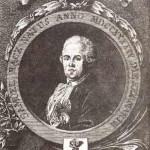 Sámuel Rácz (1744-1807) taught physiology and a selection of other subjects from 1783 until his death. He wrote the first Hungarian physiology textbook, entitled A Short Summary of Physiology [A physiológiának rövid sommája], published in 1789 in Pest (now Budapest). His work was meant primarily for Master of Surgery students who couldn’t speak Latin.
Sámuel Rácz (1744-1807) taught physiology and a selection of other subjects from 1783 until his death. He wrote the first Hungarian physiology textbook, entitled A Short Summary of Physiology [A physiológiának rövid sommája], published in 1789 in Pest (now Budapest). His work was meant primarily for Master of Surgery students who couldn’t speak Latin.
 Pál Kitaibel (1757-1817) taught botany from 1784 as a medical student until his retirement in 1816. He was one of the most significant natural scientists of his time, as well as the founder of the University’s botanical collection. He systematically toured Hungary (with the exception of the then separately governed Transylvania), and collected its flora and mineral waters; he even assembled an ethnographic collection.
Pál Kitaibel (1757-1817) taught botany from 1784 as a medical student until his retirement in 1816. He was one of the most significant natural scientists of his time, as well as the founder of the University’s botanical collection. He systematically toured Hungary (with the exception of the then separately governed Transylvania), and collected its flora and mineral waters; he even assembled an ethnographic collection.
 Ferenc Bene (1775-1858) taught theoretical medicine at the Royal University of Hungary’s Medical Faculty (now Semmelweis University) from 1799, later moving on to teach other subjects, as well. In 1801, he administered the first smallpox vaccine in Hungary, also playing a major role in its propagation. Bene was one of the people behind the planning and implementation of the measures to fight the Great Cholera Epidemic of 1831. It was upon his initiative that the first professional organisations began their work in the form of the Hungarian Physicians and Natural Philosophers’ series of congresses, which commenced in 1841.
Ferenc Bene (1775-1858) taught theoretical medicine at the Royal University of Hungary’s Medical Faculty (now Semmelweis University) from 1799, later moving on to teach other subjects, as well. In 1801, he administered the first smallpox vaccine in Hungary, also playing a major role in its propagation. Bene was one of the people behind the planning and implementation of the measures to fight the Great Cholera Epidemic of 1831. It was upon his initiative that the first professional organisations began their work in the form of the Hungarian Physicians and Natural Philosophers’ series of congresses, which commenced in 1841.
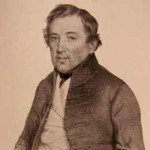 János Teophil Fabini (1791-1847) was the first professor of ophthalmology in Hungary. It was through his appointment to professorship that ophthalmology became a regular subject at the University. His 1823 textbook, Doctrina de Morbis Oculorum, was translated into five languages (Dutch, English, German, Hungarian, Italian) and used at universities in various countries.
János Teophil Fabini (1791-1847) was the first professor of ophthalmology in Hungary. It was through his appointment to professorship that ophthalmology became a regular subject at the University. His 1823 textbook, Doctrina de Morbis Oculorum, was translated into five languages (Dutch, English, German, Hungarian, Italian) and used at universities in various countries.
 Ágost Schoepf-Merei (1804-1858) taught medical history at the University from 1836. However, it was his introduction of paediatrics to Hungary – a discipline he began teaching at the University in 1844 – that made him renowned. He founded an orthopaedics institute in 1836, which was washed away by the Great Flood of 1838 just two years later. In 1839, he established the Poor Children’s Hospital, the first paediatric hospital in Hungary. Schoepf-Merei also wrote the first Hungarian paediatric textbook in 1847. He served as an army physician during the Hungarian War of Independence (1848-1849), and so was forced into exile following its defeat. After making several short stops, he finally settled in Manchester, where he co-founded another paediatric hospital, the Clinical Hospital for the Diseases of Children, in 1856.
Ágost Schoepf-Merei (1804-1858) taught medical history at the University from 1836. However, it was his introduction of paediatrics to Hungary – a discipline he began teaching at the University in 1844 – that made him renowned. He founded an orthopaedics institute in 1836, which was washed away by the Great Flood of 1838 just two years later. In 1839, he established the Poor Children’s Hospital, the first paediatric hospital in Hungary. Schoepf-Merei also wrote the first Hungarian paediatric textbook in 1847. He served as an army physician during the Hungarian War of Independence (1848-1849), and so was forced into exile following its defeat. After making several short stops, he finally settled in Manchester, where he co-founded another paediatric hospital, the Clinical Hospital for the Diseases of Children, in 1856.
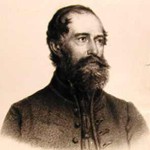 Lajos Arányi (1812-1887) is credited with the introduction of pathology to the University’s curriculum. He lectured on the subject starting in 1844, and wrote the first Hungarian pathology textbook, as well. He founded a pathology institute at the University in 1854, at his own expense. Beyond his narrowly defined profession, Arányi was involved in historic preservation (e.g. the description of the Vajdahunyad Castle), collected folk remedies, and made linguistic and ethnographic observations.
Lajos Arányi (1812-1887) is credited with the introduction of pathology to the University’s curriculum. He lectured on the subject starting in 1844, and wrote the first Hungarian pathology textbook, as well. He founded a pathology institute at the University in 1854, at his own expense. Beyond his narrowly defined profession, Arányi was involved in historic preservation (e.g. the description of the Vajdahunyad Castle), collected folk remedies, and made linguistic and ethnographic observations.
 János Balassa (1814-1868) was considered the greatest surgeon of his time. He was a student of the Second Viennese Medical School (Hebra, Skoda, Rokitansky), but was also influenced by the French surgical school. In the 1840s, his circle of friends (Korányi, Markusovszky, Lumniczer, Semmelweis, Bókai) comprised the so-called Medical School of Pest (now Semmelweis University), which later came to play a leading role in the development of Hungarian health care. Balassa was among the first to perform ether anaesthesia in Hungary, and was one of the pioneers of plastic surgery. He was a founder of the Hungarian Medical Journal [Orvosi Hetilap] in 1857.
János Balassa (1814-1868) was considered the greatest surgeon of his time. He was a student of the Second Viennese Medical School (Hebra, Skoda, Rokitansky), but was also influenced by the French surgical school. In the 1840s, his circle of friends (Korányi, Markusovszky, Lumniczer, Semmelweis, Bókai) comprised the so-called Medical School of Pest (now Semmelweis University), which later came to play a leading role in the development of Hungarian health care. Balassa was among the first to perform ether anaesthesia in Hungary, and was one of the pioneers of plastic surgery. He was a founder of the Hungarian Medical Journal [Orvosi Hetilap] in 1857.
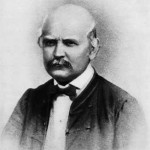 Ignác Semmelweis (1818-1865), popularly known as “the saviour of mothers” is probably the best known Hungarian doctor. He began his career in Vienna; it was here that he discovered the cause of puerperal fever, which was claiming the lives of many women in childbed at the time. His pioneering work in antiseptic procedures led to a dramatic decrease in the mortality rate among women who gave birth in hospitals that applied his measures. He left Vienna for the Medical Faculty of the Imperial and Royal University of Pest (now Semmelweis University), where he served as professor and director of the Department of Obstetrics and Gynaecology from 1855 to 1865. Semmelweis’s attempts to have his principles related to asepsis accepted by the medical community met with strong opposition; the significance of his work was only recognized after his death. Detailed biography of Ignác Semmelweis
Ignác Semmelweis (1818-1865), popularly known as “the saviour of mothers” is probably the best known Hungarian doctor. He began his career in Vienna; it was here that he discovered the cause of puerperal fever, which was claiming the lives of many women in childbed at the time. His pioneering work in antiseptic procedures led to a dramatic decrease in the mortality rate among women who gave birth in hospitals that applied his measures. He left Vienna for the Medical Faculty of the Imperial and Royal University of Pest (now Semmelweis University), where he served as professor and director of the Department of Obstetrics and Gynaecology from 1855 to 1865. Semmelweis’s attempts to have his principles related to asepsis accepted by the medical community met with strong opposition; the significance of his work was only recognized after his death. Detailed biography of Ignác Semmelweis
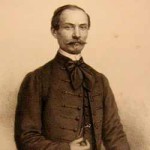 János Bókai (1822-1884) started working with Schoepf-Merei at the Poor Children’s Hospital as a medical student. Following his master’s emigration after the defeat of the Hungarian War of Independence, he took over as head of the institution. Though the hospital did not belong to the University at this time, it was here that the teaching of paediatrics took place. As part of János Balassa’s circle, Bókai played a role in the modernisation of the country’s health care system following the Austro-Hungarian Compromise of 1867. In 1873, he became the first professor of paediatrics in Hungary. His introduction of serum therapy to Hungary contributed greatly to the decline in child mortality from diphtheria.
János Bókai (1822-1884) started working with Schoepf-Merei at the Poor Children’s Hospital as a medical student. Following his master’s emigration after the defeat of the Hungarian War of Independence, he took over as head of the institution. Though the hospital did not belong to the University at this time, it was here that the teaching of paediatrics took place. As part of János Balassa’s circle, Bókai played a role in the modernisation of the country’s health care system following the Austro-Hungarian Compromise of 1867. In 1873, he became the first professor of paediatrics in Hungary. His introduction of serum therapy to Hungary contributed greatly to the decline in child mortality from diphtheria.
 József Fodor (1843-1901) is considered one of the founders of public health. He served as head of the University’s Department of Public Health from 1874 until his death. It was upon his suggestion that the institution of school doctors and health educators was introduced in 1885. Over the course of his internationally recognised career, he contributed a lot to the public health of Budapest, which was rapidly expanding into a metropolis at the time. This explains why, just eight years after his death, a statue was erected in the capital in his honour.
József Fodor (1843-1901) is considered one of the founders of public health. He served as head of the University’s Department of Public Health from 1874 until his death. It was upon his suggestion that the institution of school doctors and health educators was introduced in 1885. Over the course of his internationally recognised career, he contributed a lot to the public health of Budapest, which was rapidly expanding into a metropolis at the time. This explains why, just eight years after his death, a statue was erected in the capital in his honour.
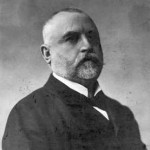 Endre Hőgyes (1847-1906) is best known for introducing Pasteur’s vaccine against rabies to Hungary, and further developing the vaccine. Beginning his career at our University in 1870, he accepted a position in Kolozsvár (Cluj Napoca) four years later. Hőgyes returned to Budapest in 1883 to head the Department of General Pathology and Pharmacy. In 1890, he became the first director of the newly founded Pasteur Institute within the Faculty of Medicine. He is held up today as one of the Hungarian founders of experimental pathology.
Endre Hőgyes (1847-1906) is best known for introducing Pasteur’s vaccine against rabies to Hungary, and further developing the vaccine. Beginning his career at our University in 1870, he accepted a position in Kolozsvár (Cluj Napoca) four years later. Hőgyes returned to Budapest in 1883 to head the Department of General Pathology and Pharmacy. In 1890, he became the first director of the newly founded Pasteur Institute within the Faculty of Medicine. He is held up today as one of the Hungarian founders of experimental pathology.
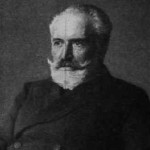 József Árkövy (1851-1922) was the first full professor of dentistry in Hungary. Although the subject had been taught at the University from the 18th century, it was under Árkövy’s direction that the first dental clinic was founded in 1890. The Association Stomatologique Internationale elected him honorary president for life, an indication of the esteem his colleagues held him in.
József Árkövy (1851-1922) was the first full professor of dentistry in Hungary. Although the subject had been taught at the University from the 18th century, it was under Árkövy’s direction that the first dental clinic was founded in 1890. The Association Stomatologique Internationale elected him honorary president for life, an indication of the esteem his colleagues held him in.
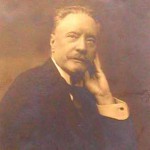 Mihály Lenhossék (1863-1937) is considered to be the first internationally renowned figure of Hungarian anatomy. Both his father and grandfather taught anatomy at the University, as well. The Nobel laureate Santiago Ramón y Cajal considered him a partner in laying the foundation for neuroscience. In addition to anatomy, Lenhossék was actively involved in cave research and prehistoric archeology.
Mihály Lenhossék (1863-1937) is considered to be the first internationally renowned figure of Hungarian anatomy. Both his father and grandfather taught anatomy at the University, as well. The Nobel laureate Santiago Ramón y Cajal considered him a partner in laying the foundation for neuroscience. In addition to anatomy, Lenhossék was actively involved in cave research and prehistoric archeology.
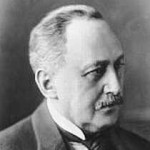 Lajos Winkler (1863-1939) is one of the fathers of modern pharmacy education in Hungary. A student of Károly Than, he opened new doors in the field of analytical chemistry. Winkler’s iodometric titration method is considered to be a standard, while his method for determining iodine and bromine numbers continues to be widely used to this day. In 1964, a commemorative medal was established in his honour.
Lajos Winkler (1863-1939) is one of the fathers of modern pharmacy education in Hungary. A student of Károly Than, he opened new doors in the field of analytical chemistry. Winkler’s iodometric titration method is considered to be a standard, while his method for determining iodine and bromine numbers continues to be widely used to this day. In 1964, a commemorative medal was established in his honour.
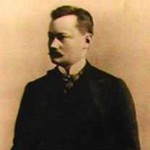 Sándor Korányi (1866-1944) was an internist who achieved legendary status in his own lifetime. His father, Frigyes Korányi, had also been a professor of internal medicine at the University. Sándor Korányi conducted fundamental research on renal diseases, and was the one who initiated the BCG vaccine in Hungary in the 1920s. As professor, he established a new school of thought; his students included Rezső Bálint, Imre Haynal, and Géze Hetényi.
Sándor Korányi (1866-1944) was an internist who achieved legendary status in his own lifetime. His father, Frigyes Korányi, had also been a professor of internal medicine at the University. Sándor Korányi conducted fundamental research on renal diseases, and was the one who initiated the BCG vaccine in Hungary in the 1920s. As professor, he established a new school of thought; his students included Rezső Bálint, Imre Haynal, and Géze Hetényi.
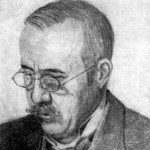 Ödön Krompecher (1870-1926) was a professor of pathology at the medical faculty in Budapest (now Semmelweis University), best known for describing the basal cell carcinoma. He wrote the majority of his significant works in German. In addition to his medical vocation, Krompecher also took an avid interest in philosophy and ornithology.
Ödön Krompecher (1870-1926) was a professor of pathology at the medical faculty in Budapest (now Semmelweis University), best known for describing the basal cell carcinoma. He wrote the majority of his significant works in German. In addition to his medical vocation, Krompecher also took an avid interest in philosophy and ornithology.
 Imre Haynal (1892-1979) was one of the most renowned internists of his time, just like his master, Sándor Korányi. The reverence accorded him was based not only on his professional expertise, but on the moral stand he took against the Communist dictatorship, as well. His scientific work focused primarily on cardiology and endocrinology. As professor, he was very influencial, creating a new school of thought. His significance is evident in the fact that the University of Medical Further Training took his name in 1993.
Imre Haynal (1892-1979) was one of the most renowned internists of his time, just like his master, Sándor Korányi. The reverence accorded him was based not only on his professional expertise, but on the moral stand he took against the Communist dictatorship, as well. His scientific work focused primarily on cardiology and endocrinology. As professor, he was very influencial, creating a new school of thought. His significance is evident in the fact that the University of Medical Further Training took his name in 1993.
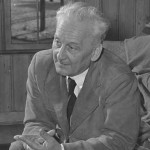 Albert Szent-Györgyi (1893-1986) is the only Hungarian Nobel laureate who received the distinction for research conducted in Hungary. He earned his diploma at the medical faculty in Budapest (now Semmelweis University). After several years spent abroad doing research, he accepted a position at the University of Szeged’s Faculty of Medicine, where he worked from 1931 to 1945. It was here that he successfully isolated vitamin C from paprika. Szent-Györgyi returned to the University of Budapest’s Faculty of Medicine after the war, but emigrated to the USA in 1947 to escape the emerging Communist dictatorship.
Albert Szent-Györgyi (1893-1986) is the only Hungarian Nobel laureate who received the distinction for research conducted in Hungary. He earned his diploma at the medical faculty in Budapest (now Semmelweis University). After several years spent abroad doing research, he accepted a position at the University of Szeged’s Faculty of Medicine, where he worked from 1931 to 1945. It was here that he successfully isolated vitamin C from paprika. Szent-Györgyi returned to the University of Budapest’s Faculty of Medicine after the war, but emigrated to the USA in 1947 to escape the emerging Communist dictatorship.
 Aladár Benzák (1901-1959) graduated from the University of Debrecen. He began his career at his alma mater, but accepted a position at the University of Budapest’s Faculty of Medicine (now Semmelweis University) in 1932, where he later became a professor of physiology. The primary focus of his research was on the physiology of metabolism, in which he attained internationally recognised results. He emigrated following the Communist takeover in 1948, eventually settling in Canada.
Aladár Benzák (1901-1959) graduated from the University of Debrecen. He began his career at his alma mater, but accepted a position at the University of Budapest’s Faculty of Medicine (now Semmelweis University) in 1932, where he later became a professor of physiology. The primary focus of his research was on the physiology of metabolism, in which he attained internationally recognised results. He emigrated following the Communist takeover in 1948, eventually settling in Canada.
 János Szentágothai (1912-1994), an anatomist and brain researcher, began his career in Budapest in 1936. He proved the validity of the Neuron Doctrine of Ramón y Cajal, Hiss and Lenhossék, decades before the development of the electron microscope. He was invited to the University of Pécs after the Second World War, returning to the now independent Budapest University of Medicine in 1963. Szentágothai’s neurohistological research attained international recognition primarily in the areas related to the spinal cord, the cerebellum, the thalamic nuclei, and the cortex. He played an active role in scientific and political life. In addition to his profession, Szentágothai was involved in history and the various arts (literature, music, painting), a true renaissance man. His textbook, first published in 1971, is still in use today.
János Szentágothai (1912-1994), an anatomist and brain researcher, began his career in Budapest in 1936. He proved the validity of the Neuron Doctrine of Ramón y Cajal, Hiss and Lenhossék, decades before the development of the electron microscope. He was invited to the University of Pécs after the Second World War, returning to the now independent Budapest University of Medicine in 1963. Szentágothai’s neurohistological research attained international recognition primarily in the areas related to the spinal cord, the cerebellum, the thalamic nuclei, and the cortex. He played an active role in scientific and political life. In addition to his profession, Szentágothai was involved in history and the various arts (literature, music, painting), a true renaissance man. His textbook, first published in 1971, is still in use today.
Rectors
Rectors of the independent medical university (1951–)
2018- Béla Merkely
2012-2018 Ágoston Szél
2003-2012 Tivadar Tulassay
2000-2003 Péter Sótonyi
1996-1999 László Romics
1995/96 László Rosivall
1991-1995 Miklós Réthelyi
1985-1991 Endre Somogyi
1979-1985 Andor Szécsény
1973-1979 Ferenc Antoni
1967-1973 Imre Zoltán
1964-1967 József Sós
1961-1964 Imre Törő
1951-1961 Pál Gegesi Kiss
Rectors elected from the Medical Faculty
(then a part of the university of science), listed according to the year of their appointment
1946/47 Lajos Ádám / József Frigyesi
1944/45 József Frigyesi
1942/43 Lajos Bakay
1938/39 Tibor Verebélÿ
1934/35 Balázs Kenyeres
1930/31 Lajos Nékám
1926/27 Hugó Preisz
1922/23 János Bársony
1920/21 Ernő Emil Moravcsik
1914/15 Mihály Lenhossék
1910/11 Imre Réczey / Antal Genersich
1906/07 Sándor Ajtai Kovách
1902/03 Károly Kétly
1898/99 Géza Mihalkovics
1894/95 József Fodor
1890/91 Vilmos Schulek
1886/87 Frigyes Korányi
1882/83 Jenő Jendrássik
1878/79 József Lenhossék
1874/75 József Kovács
1870/71 Tamás Stockinger
1866/67 Nepomuk János Rupp
1862/63 Ignác Sauer
1845/46 János Teophil Fabini
1841/42 Ede Flórián Birly
1837/38 Károly Böhm
1833/34 János Veleczky
1829/30 Ignác Stáhly
1825/26 János Reisinger
1821/22 János Schuster
1817/18 Mihály Ignác Lenhossék
1813/14 Ferenc Eckstein
1809/10 Ferenc Bene
1805/06 Ferdinánd Stipsics
1802/03 Ferdinánd Stipsics
1799/1800 József Schönbauer
1796/97 Ferdinánd Stipsics
1793/94 Sámuel Rácz
1790/91 Jakab József Winterl
1786/87 Vencel Trnka
1783/84 Mihály Shoretits
1779/80 Jakab József Winterl
1774/75 Ádám Ignác Prandt
Detailed History
Deatiled history of Semmelweis University
1769-1848
The roots of our University reach back to the 18th century, when Empress Maria Theresa added a medical faculty to the only Hungarian university at the time, the University of Nagyszombat (Trnava). As the first step the Empress, in a charter dated 17 July 1769, raised the university to the status of a “royal institute” and supplied it with grants meant to finance the Medical Faculty, which was to be established shortly thereafter.

The actual formation of the new Faculty began following the Empress’s decree of 7 November 1769. The organising work was vested on her Dutch court physician, Gerard van Swieten, who had previously organised the Empire’s health care system and modernised the University of Vienna as well.
The Medical Faculty opened in November 1770, with only five departments. It was given a building of its own in 1772, but soon the whole university left the small town of Nagyszombat behind, moving to the centre of the country: Buda. Although the university had been functioning continuously since its establishment, the ceremonial opening and re-foundation of the university, held in the Buda Castle, only took place in June of 1780, three years after the move. When the city of Buda did not prove to be a suitable location for the university either, it moved on to Pest in 1784. The Medical Faculty finally found a home in a former Jesuits’ monastery at the corner of Hatvani (now Kossuth Lajos) and Újvilág (now Semmelweis) streets.
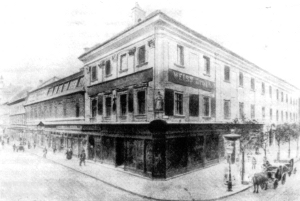
Meanwhile, the number of departments and students at the Faculty steadily increased, with the latter exceeding the impressive one thousand mark by the early 1830s. In addition to training physicians, the Faculty also trained surgeon masters, civil surgeons, pharmacist masters, veterinarians and midwives.
The language of instruction at the Medical Faculty was Latin well into the 19th century, although the university’s other faculties taught their courses in either German or Hungarian. The declaration of Hungarian as the official state language as part of the nationalist reforms of the 1840s found medical education wholly unprepared, as a sophisticated set of technical medical terminologies did not yet exist in Hungarian. Indeed, the professors of the Medical Faculty ended up contributing greatly to the eventual creation of a modern medical vocabulary in the national vernacular.
The Revolution of 1848 and subsequent War of Independence also marked a turning point in the university’s history. The April Laws, issued by the Hungarian Diet, contained a separate article (1848: XIX. art.) dealing with the university, which declared its independence and reaffirmed the liberal principle of academic freedom.
A significant portion of the university’s students and staff members became involved in the War of Independence which broke out that September, partly by undertaking medical officer duties in the Honvéd defence force, and partly by organising army medic courses and military health care management. Following the imperial victory, retaliation against these individuals did not tarry.
1849-1919
The defeat of the War of Independence severely affected the Faculty’s academic staff, some of whom emigrated (e.g. Ágoston Schoepf-Merei), while others were imprisoned (e.g. János Balassa, Vilmos Zlamál). The long-term development plans that had been conceived in 1848 had to be taken off the agenda for a long time.
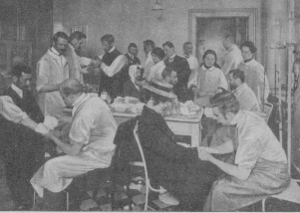
Nonetheless, some modernisation did take place during this reactionary period; from 1850 on, secondary school graduation (G.C.E) became compulsory for admission to the university and the post of Faculty Director was abolished.
Although practitioners were still being trained in nine departments, the surgical master program, which had previously been constantly filled to capacity, withered and, as had happened earlier in Lemberg, Olomouc and Salzburg, was eventually discontinued in Budapest as well. In 1872, the surgical guilds were also dissolved.
As a result of the Compromise of 1867, Hungarian became the country’s official language once again, as well as the only language of instruction at what was known by this time as the University of Budapest. As a direct consequence, foreign-speaking students that had previously arrived in large numbers from not only countries outside the Habsburg Empire, but from the non-Hungarian territories within it as well, now effectively disappeared from the university, thus temporarily stripping the Medical Faculty of its multicultural character.
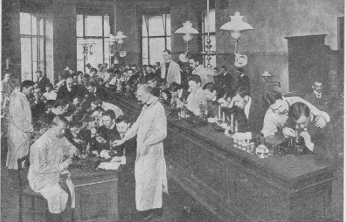
At the same time, the training of doctors and pharmacists in Hungary and, indeed, these professions as a whole, were met with an entirely new set of challenges. The civic and economic prosperity and the associated public health problems caused by rapid urbanization on the one hand, and the fast-paced development of the medical field on the other, exerted a bilateral pressure on what was, by then, a miserable and crowded Medical Faculty. The practical part of education had been regarded weak even earlier than this, owing mostly to the lack of a large, public hospital background.
All these issues were answered through the development plans for the construction of a health institution network, and the improvement of higher education to serve this network. In 1872, the surgical master and doctor of medicine programs were merged, and a unified medical training system introduced. In that same year, a second Hungarian university of sciences was founded in Kolozsvár (Cluj-Napoca), which also included a medical faculty. Following this development, in 1873, the construction of brand new sites for the Budapest Medical Faculty could also commence. The construction work, which lasted until 1911, absorbed a significant amount of money, amounting to about 25 million crowns. However, the end result was a scientific establishment that was on par with contemporary standards in all respects, capable of significant academic performance and with the capacity to train an ample number of qualified health care professionals
From the 1880s onward, the number of students enrolled in the Medical Faculty was steadily over 1000, a number which was still considered extremely high as little as 50 years ago. Starting in 1895, women were also legally allowed to be admitted to the medical and pharmacy courses.
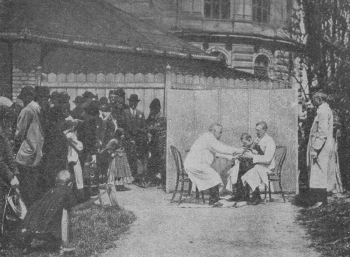
During the First World War, many of the Faculty’s students and teachers joined the Austro-Hungarian army. The number of serviceable hospital beds was hastily increased to 2000, half of which were reserved for the wounded. The shift to a war economy brought significant financial constraints to the university as well but, as a silver lining amid the misfortune, the majority of the construction work had already been undertaken prior to the war’s eruption, and so the Budapest Medical Faculty was successfully completed in spite of this.
Following the armistice, disarmed students returned to the university from the trenches en masse, creating an impossible situation for the institution. The so-called Aster (or, Chrysanthemum) Revolution of 1919 also caused severe problems, as did the brief proletarian dictatorship which followed soon after, and which almost immediately withdrew the university’s autonomy and intruded deeply into its internal affairs. This provided a small taste of the methods the Communist dictatorship would employ some 30 years later.
1920-1951
The war, the Commune, the Romanian occupation of Budapest, the truncation of the country through the Treaty of Trianon and the general political uncertainty gave rise to extremely serious economic and social tensions, which had an impact on the university as well. Fraternal societies began to form with the participation of the veteran students, anti-Semitic riots broke out and the university, for the first time in its history, had to limit the number of students that could be admitted. In 1921, the university was renamed Péter Pázmány University, in honour of the university’s original founder. The next year, a reform to medical education was introduced, which increased the training period from five to six years and the number of finals from three to four. In 1936, a congress held on the state of national higher education also elaborated important recommendations for change but, of these, only those relating to the training of pharmacists were realised.
Today’s Faculty of Dentistry was founded in 1909, when Europe’s most modern dental clinic, the Stomatology Clinic was opened in the vicinity of the Faculty. In the 1920s the the education of maxillofacial surgery and an x-ray department were added to the clinic’s features. Following the initiative of Károly Balogh, director, dentistry became a compulsory subject in medical education in 1947.
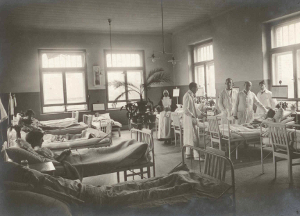
In the interwar years, no new developments were introduced at either Péter Pázmány University or its Medical Faculty, as all resources were being put towards the construction – from scratch – of three universities in the countryside, two of which had been transported from territories lost by Hungary through the Treaty of Trianon. In 1936, two of the university’s clinics were also closed in this spirit of thrift.
Nonetheless, the Faculty’s academic performance continued to be ranked among the leading faculties of the world, thanks to groundwork which had been laid during the years of the Austro-Hungarian Dual Monarchy (1867-1918).
The Second World War erupted in 1939; however, aside from the compulsory military service which involved the teaching staff, the war did not have a significant impact on the university until the German occupation of Hungary in the spring of 1944.
In spite of being expressly instructed to do so by the Nyilas (Hungarian Nazi) government, the university refused to be transported to Germany. However, even before the military siege ring completely closed around Budapest, many upper-year engineer, medical, pharmacy and veterinary students (i.e. representatives of all the professions that were regarded as important for the continuation of the war) were forcibly resettled through drafting. Thus, a total of about 600 medical and pharmacy students, together with a portion of the academic staff, were taken away, some to Halle and others to Austria.
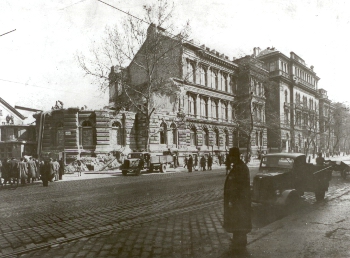
The Siege of Budapest caused enormous damage to the university’s buildings, the value of which amounted to over 13 million gold pengő. After the war, large-scale politically-motivated purges began of the teaching staff, the majority of whom were thus replaced.
The gradually developing Communist dictatorship eventually transformed not only the make-up of the university’s academic staff and the social composition of its students, but, in fact, the entire university itself. In 1950, the university’s namesake, Péter Pázmány (archbishop of Esztergom, who had founded the University of Nagyszombat), was deemed unacceptable by the Communist regime, and so the university’s name was changed to Eötvös Loránd University (ELTE). Then, in 1951, in a broader move based on the Russian model, the medical faculties were split off from their parent universities and turned into independent, specialised institutions. At the same time, they were taken out from under the inspection of the Ministry of Culture and placed under the newly formed Ministry of Health. The newly renamed Eötvös Loránd University’s Medical Faculty thus became the Budapest University of Medicine (BOTE).
1952-2014
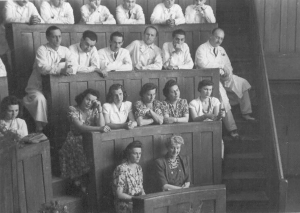
In the post-war period, the newly formed Budapest University of Medicine enjoyed a period of significant and extensive growth, as several hospitals – converted into clinics – were added to it. The University managed to establish previously missing departments, though the cost of this rapid development has been the University’s high degree of territorial fragmentation.
Following the withdrawal of the University’s autonomy by the Communist regime, it was placed under the strict central control of the Ministry of Health, which even prescribed the extent of its participation in regional medical care.
At the same time, medical research was starting to involve increasingly expensive areas, which consequently resulted in the University’s lagging behind the world’s wealthier nations. To make matters worse, there was a political trend of reclusion in the 1950s, due to the exclusive Soviet influence affecting even the sciences.
The essential components of a true university, such as the rector’s office and the faculties (then called the Faculty of General Medicine, Faculty of Dentistry and Faculty of Pharmaceutical Sciences, respectively), took their final form in 1955. Pharmaceutical training was moved from Eötvös Loránd University of Sciences to the Budapest University of Medicine in 1951, and the training of doctors of dentistry, in an entirely new system, commenced in 1952.

During the Revolution of 1956, which broke out on October 23 of that year, the University found itself at the centre of events, with its clinics essentially taking the role of war hospitals and the University staff and students showing a truly heroic commitment to the national cause. Within a few weeks, the University buildings were afflicted with damage much more serious than that which had followed the siege of 1945. Approximately 180 professors and staff members, as well as a large number of students, fled the country in the immediate aftermath of the Revolution.
After the Soviet consolidation, development of the University continued, albeit at a slower pace than previously. The greatest investment of the period, the Theoretical Block at Nagyvárad tér (NET), was completed in 1978. Although this impressive structure is but one element of the grandiose plans which had been conceived in the 1960s, unfortunately, the majority of these have remained merely in the form of blueprints.

With the introduction of Goulash Communism in the 1960s, the development of contacts with the western world, albeit gradual and under close supervision, became possible. The increasingly number of external relations promoted the return of Hungarian professionals to the international sphere, and to their ability to keep apace of scientific developments.
On 7 November 7 1969, the bicentennial of the founding of the Medical Faculty at the University of Nagyszombat, the University decided to mark the occasion by taking the name of its most famous professor, Ignác Semmelweis, also known as “the saviour of mothers”. The Budapest University of Medicine thus became Semmelweis University of Medicine.
Although foreign students could be found at the University from the 1950s onwards, in general, only those students from countries regarded by the political leadership as fraternal states (e.g. Albania, North Korea, East Germany, Vietnam) were permitted to attend. At that time, these international students were trained in Hungarian. The relative liberalisation of the 1970s resulted in a dramatic increase in the number of foreign students, who began to arrive from not only the “socialist camp”, but the so-called Third World as well. The most significant development in the training of foreign students was arguably the commencement of classes in German and English in 1983 and 1989, respectively. In part as a direct result of this, the number of international students continued to rise right through the regime change, and they continue to be important pillars of the University to this day.
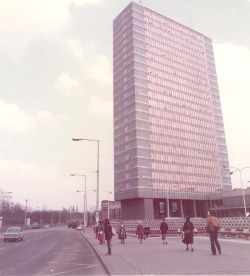
The process of democratisation, which started in 1989, resulted in important changes for the University, the most significant of which was probably the restoration of its autonomy.
In the late 1990s, in the spirit of institutional integration, the reform of the network of Hungarian higher education was on the agenda, the aim of which was a rational integration of the fragmented institutional structure. On January 1, 2000, Semmelweis University of Medicine (SOTE) merged with the Imre Haynal University of Health Sciences (HIETE) and the University of Physical Education (TF), and renamed Semmelweis University. With the addition of the Faculty of Health and Public Administration in March 2010, the University comprised a total of six faculties, namely the Faculty of Dentistry, the Faculty of Health and Public Administration, the Faculty of Health Sciences, the Faculty of Medicine, the Faculty of Pharmaceutical Sciences, and the Faculty of Physical Education and Sport Sciences until September 1, 2014. The Faculty of Physical Education and Sport Sciences separated from Semmelweis University on September 1, 2014 and formed a separate university; therefore, Semmelweis University’s final structure includes a total of five faculties.
As the greatest investments of this latter period, one should certainly mention the transplantation and surgical clinics which were commissioned in the early 1990s, the new Dentistry Centre, as well as the new Basic Medical Science Centre on Tűzoltó street, the latter two of which were both financed within this new system (PPP).
